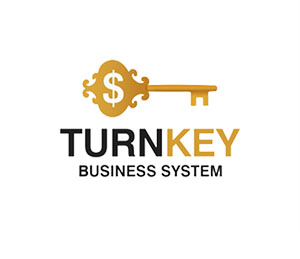Understanding the B-Book Model in Forex Brokerage

Understanding the B-Book Model in Forex Brokerage
For forex brokers, choosing the right business model is crucial to their success.
One of the most commonly used models is the B-Book model, also known as the "market maker" model.
This article will explore the B-Book model in detail, including how it works, its advantages and disadvantages, and why it remains a popular choice for many forex brokers.
One of the most commonly used models is the B-Book model, also known as the "market maker" model.
This article will explore the B-Book model in detail, including how it works, its advantages and disadvantages, and why it remains a popular choice for many forex brokers.

Understanding the B-Book Model in Forex Brokerage
What is the B-Book Model?
In the forex brokerage industry, brokers typically use one of two main models to manage client trades: the A-Book model and the B-Book model.A-Book Model (Agency Model): In this model, the broker acts as an intermediary, passing client trades directly to liquidity providers (such as banks or larger financial institutions). The broker earns revenue through commissions or spreads but does not take on the risk of client losses.
B-Book Model (Market Maker Model): In this model, the broker internalizes client trades, meaning they act as the counterparty to the client’s trades. Instead of passing trades to external liquidity providers, the broker takes on the risk of client losses and profits from client losses.
The B-Book model is often used by brokers who cater to retail traders, as it allows them to manage risk more effectively and generate revenue even in volatile market conditions.
How Does the B-Book Model Work?
In the B-Book model, the broker essentially becomes the "market maker," creating a market for their clients. Here’s how it works:Client Trades: When a client places a trade, the broker does not immediately execute it on the interbank market. Instead, the trade is recorded on the broker’s internal ledger (the "B-Book").
Risk Management: The broker assesses the risk of the trade. If the broker believes the client is likely to lose the trade, they may choose to keep the trade on their books, profiting from the client’s loss. If the broker believes the client is likely to win, they may hedge the trade by passing it to a liquidity provider.
Profit and Loss: If the client loses the trade, the broker keeps the loss as profit. If the client wins, the broker pays out the profit from their own funds.
Hedging: To mitigate risk, brokers using the B-Book model often hedge large or high-probability winning trades by passing them to liquidity providers. This ensures that the broker does not suffer significant losses if the trade goes against them.
Advantages of the B-Book Model
The B-Book model offers several advantages for forex brokers:Revenue Generation: Brokers can generate consistent revenue from client losses, making it a profitable model, especially when trading against inexperienced retail traders.
Control Over Pricing: As market makers, brokers have greater control over spreads and pricing, allowing them to offer competitive trading conditions to clients.
Risk Management: By internalizing trades, brokers can manage risk more effectively, hedging only when necessary to minimize potential losses.
Flexibility: The B-Book model allows brokers to offer a wide range of trading instruments and leverage options, attracting more clients.
No Dependency on Liquidity Providers: Brokers using the B-Book model are less reliant on external liquidity providers, reducing operational complexity and costs.
Disadvantages of the B-Book Model
Despite its advantages, the B-Book model also has some drawbacks:
Conflict of Interest: Since the broker profits from client losses, there is a potential conflict of interest. This can lead to concerns about fairness and transparency.
Risk of Large Losses: If a client makes a significant profit on a trade that the broker did not hedge, the broker may incur substantial losses.
Reputation Risk: The B-Book model is often associated with "bucket shops," which are brokers that manipulate prices or engage in unethical practices. This can damage the broker’s reputation.
Regulatory Scrutiny: Some regulators view the B-Book model as risky and may impose stricter requirements on brokers using this model.
Why Do Brokers Choose the B-Book Model?
Despite its challenges, the B-Book model remains popular among forex brokers for several reasons:Profitability: The ability to profit from client losses makes the B-Book model highly attractive, especially for brokers catering to retail traders.
Scalability: The B-Book model allows brokers to scale their operations quickly, as they are not limited by the availability of liquidity providers.
Customization: Brokers can offer customized trading conditions, such as tighter spreads or higher leverage, to attract more clients.
Market Conditions: In volatile market conditions, the B-Book model provides brokers with greater control over risk management.
Conclusion
The B-Book model is a popular choice for forex brokers due to its profitability, flexibility, and control over risk management. However, it also comes with challenges, including potential conflicts of interest and regulatory scrutiny.
Whether you’re new to the forex industry or looking to optimize your existing operations, understanding the B-Book model is essential for making informed decisions. With the right strategy and support, you can leverage the B-Book model to achieve long-term success in the competitive world of forex trading.
#ForexBrokerage #BBookModel #ForexTrading #RiskManagement
The B-Book model is a popular choice for forex brokers due to its profitability, flexibility, and control over risk management. However, it also comes with challenges, including potential conflicts of interest and regulatory scrutiny.
Whether you’re new to the forex industry or looking to optimize your existing operations, understanding the B-Book model is essential for making informed decisions. With the right strategy and support, you can leverage the B-Book model to achieve long-term success in the competitive world of forex trading.
#ForexBrokerage #BBookModel #ForexTrading #RiskManagement









Report
My comments